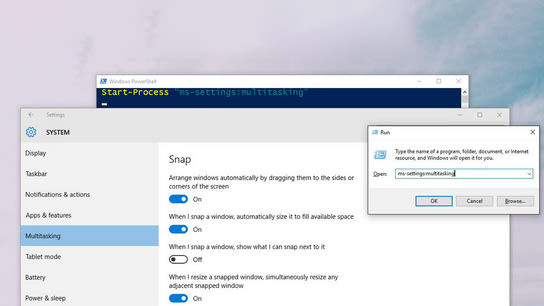You can open the legacy Windows Control Panel by starting control.exe, but how do you open the Windows Settings app from the Command Prompt or PowerShell?
You can open the Settings app directly from the Command Prompt (cmd.exe) in Windows 10 using the following command:
start ms-settings:Omit the start program prefix from the above command if you want to run it from the Run dialog (Windows key + R) instead of from within a Command Prompt session.
The Run dialog will recognize the Settings app’s URI scheme (ms-settings) without passing it through ‘start’ and start the Settings app accordingly. You’ll still need to use the start program if you want to launch the Settings app from a batch file, however.
You can optimistically type in an English language keyword after the colon to direct you towards the right section of the Settings app. For example, ms-settings:network will go directly to the Network and Internet section of the Settings app.
There’s no penalty for guessing wrong, so just take a guess and maybe you’ll drop straight into settings:windowsupdate without using the mouse. App developers and web authors should take care to link their users directly to the right section in Settings, reducing documentation needs and user friction.
You can use the same command in PowerShell — where start is an alias for Start-Process. Or, you can spell it out fully using the PowerShell commandlets (as shown below).
Start-Process "ms-settings:"These commands — actually the whole ms-settings: URI schema — will not work on older versions of Windows like Windows 8 and 8.1. Also, note that the Settings app is unavailable from within Windows Recovery mode.
In my opinion, this is kind of a strange decision as the reason you’re in recovery mode may be caused by a setting. However, user settings don’t apply at all within recovery mode so it could have been a very confusing experience if you were allowed to open the Settings app.
Users on Windows 10 can click here to open the Settings app directly from their web browser. The link won’t do anything or may trigger an error message on other operating systems.
